Chiacciaio dell’Adamello (Adamello Glacier) is the biggest glacier in Italy. It is 6 km long and 2 km wide on average, but diminishing fast.
Adamello Glacier has an unusual geometry for a glacier in the Alps. It is quite flat, wide and not surrounded by high mountain peaks. Instead, it looks more like a Scandinavian ice plateau. While the upper ice surface lies between 3100 and 3300 m, the surrounding mountains rise only 150 m above it, at best.
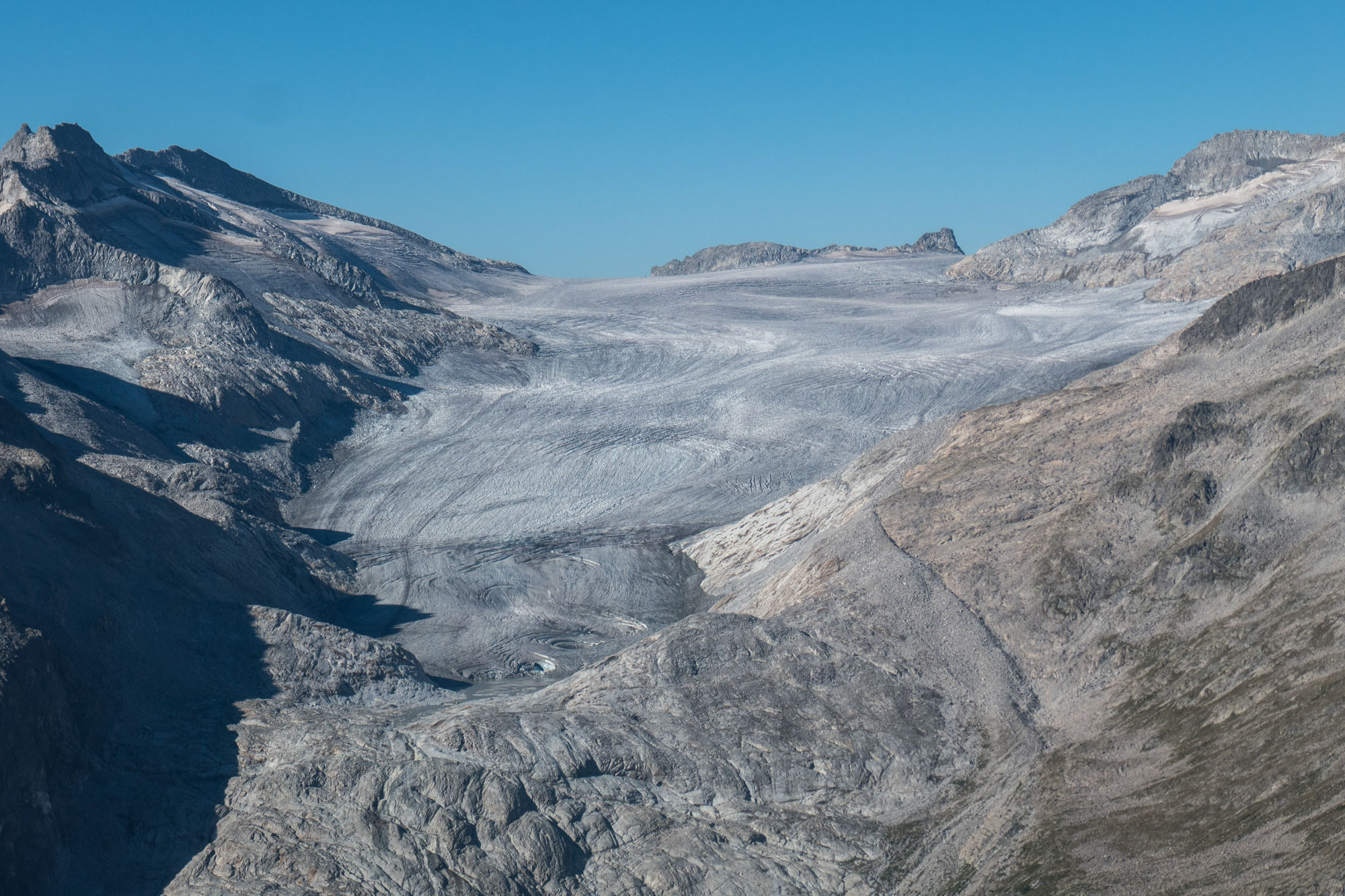
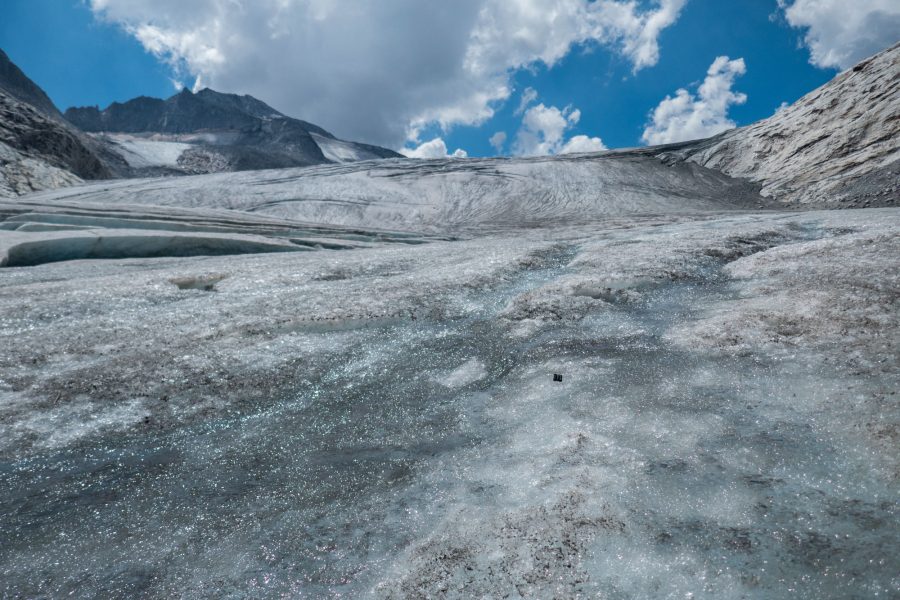
Underneath the ice, there definitively is some sort of valley. But it’s covered by up to 260 m thick ice, at least for now. Due to the low elevation of the accumulation area, even the upper part of Adamello Glacier is losing ice. With every layer of ice being removed, older ice resurfaces. Presently, the ice at the surface is from the 1990’s. But when the bottom meters will be reached, the ice is over a thousand years old (Festi et al., 2021).
In a few decades, radioactive ice will come to the surface. Italian scientists found tritium contamination in ice at around 25 m deep, corresponding to (atmospheric) nuclear bomb-testing in the 1950’s and 1960’s (Di Stefano et al., 2024). As the ice in the former accumulation zone melts about 1 m per year, the tritium-contaminated ice will surface in circa 2050. By then, the ice from the same period will already have melted at lower elevations.
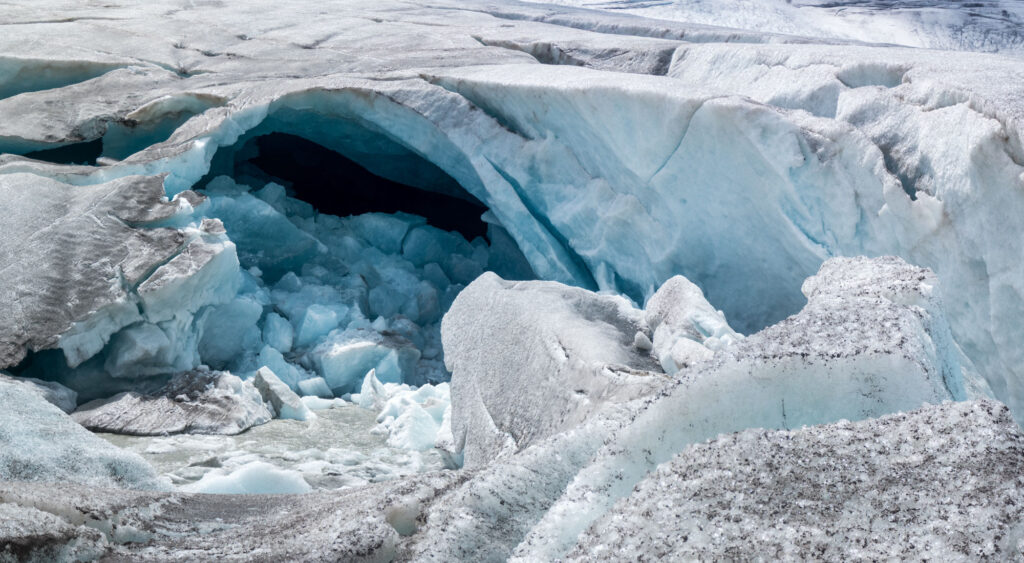
During the first World War (1914-1918) Austrian and Italian troops fought their ‘White War’ at and around Adamello Glacier. The front ran through the high mountains and soldiers had to hold positions at 3000 m. The extreme cold and snow killed tens of thousands of them. The main snout of Adamello Glacier, Vedretta Mandrone, still returns belongings (and bodies) of soldiers that crossed the glacier in those years (Museo Guerra Bianca). One reason for their crossing was a cannon weighing 6 tons that had to be installed at a mountain top right next to the glacier. It took Italian soldiers 78 days to bring the artillery piece from the valley at 1600 m, via the glacier to Cresta Croce at 3275 m, where it still stands today.
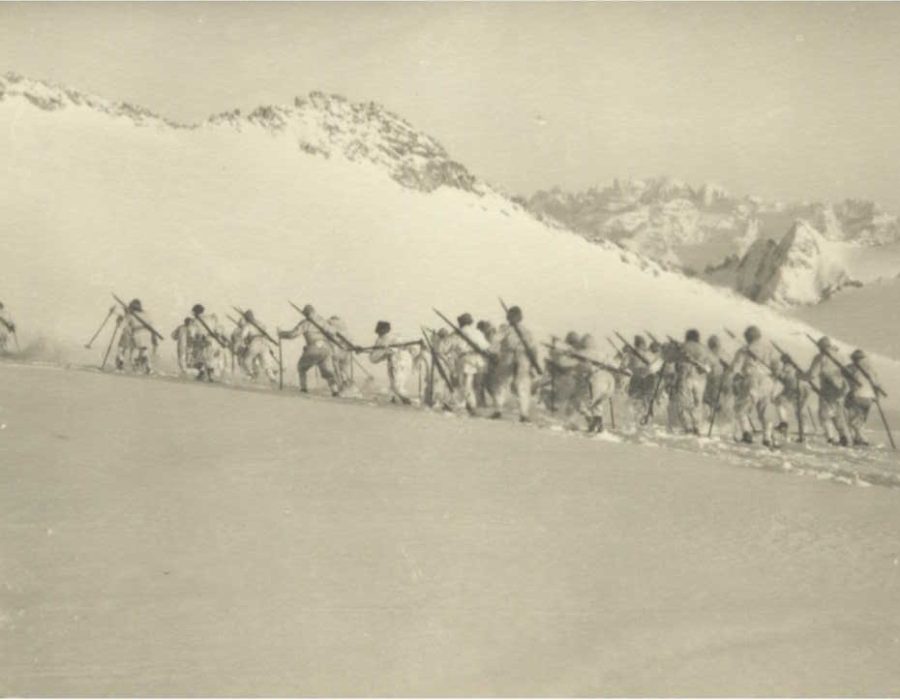
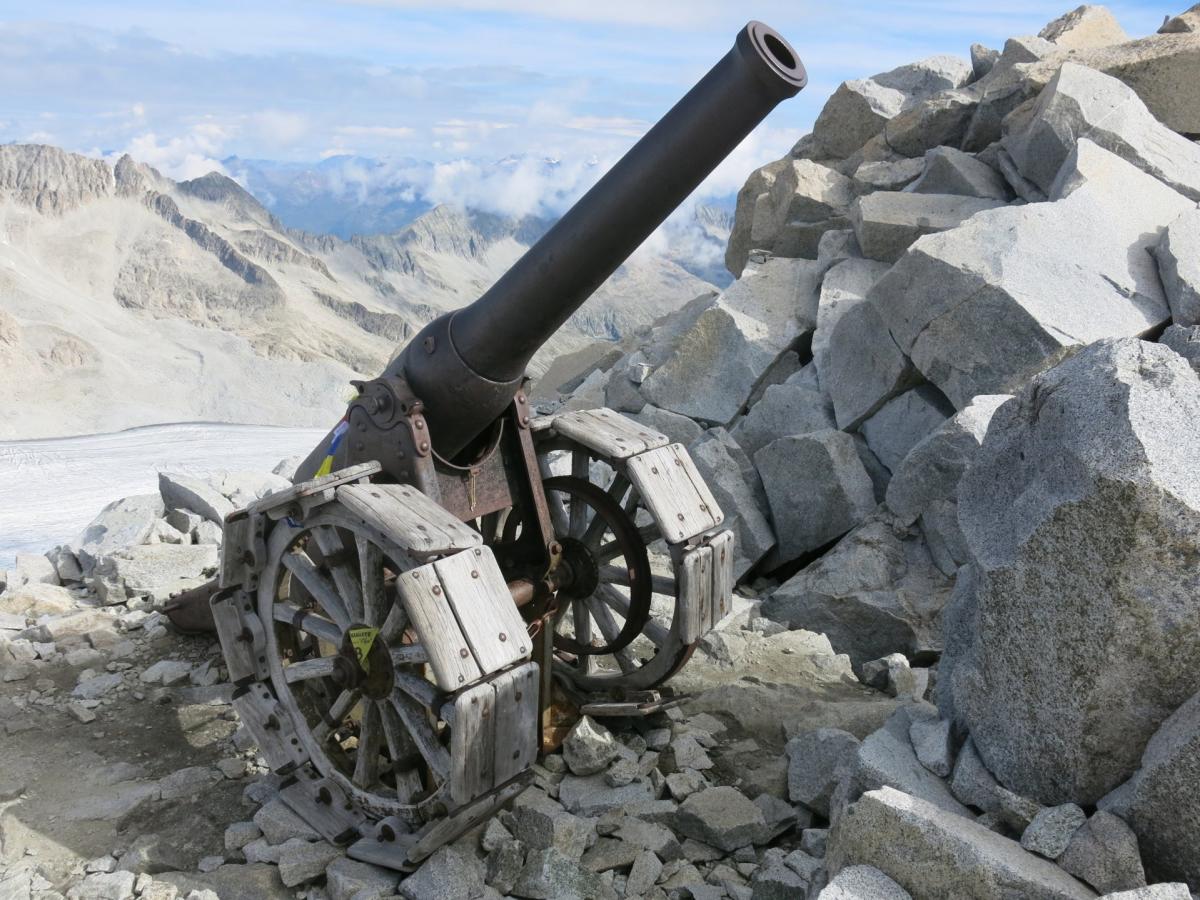
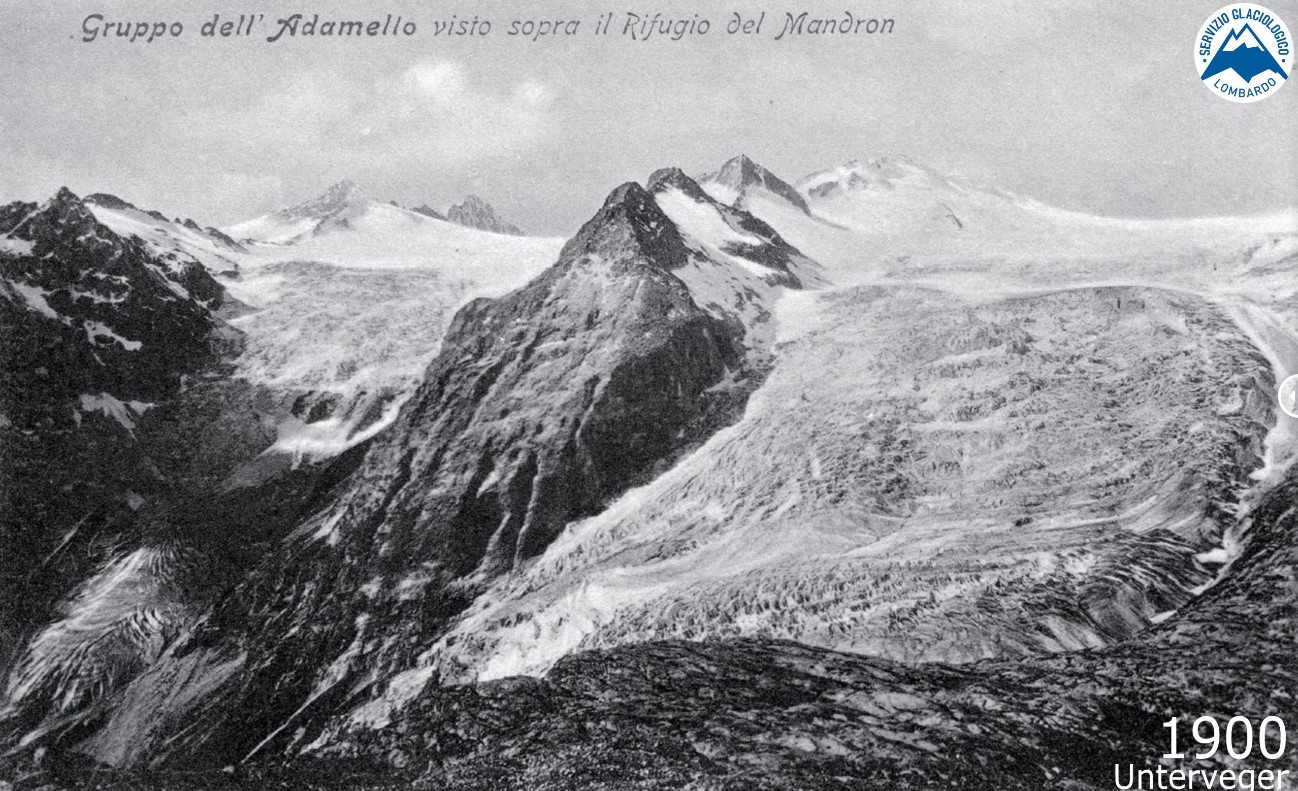
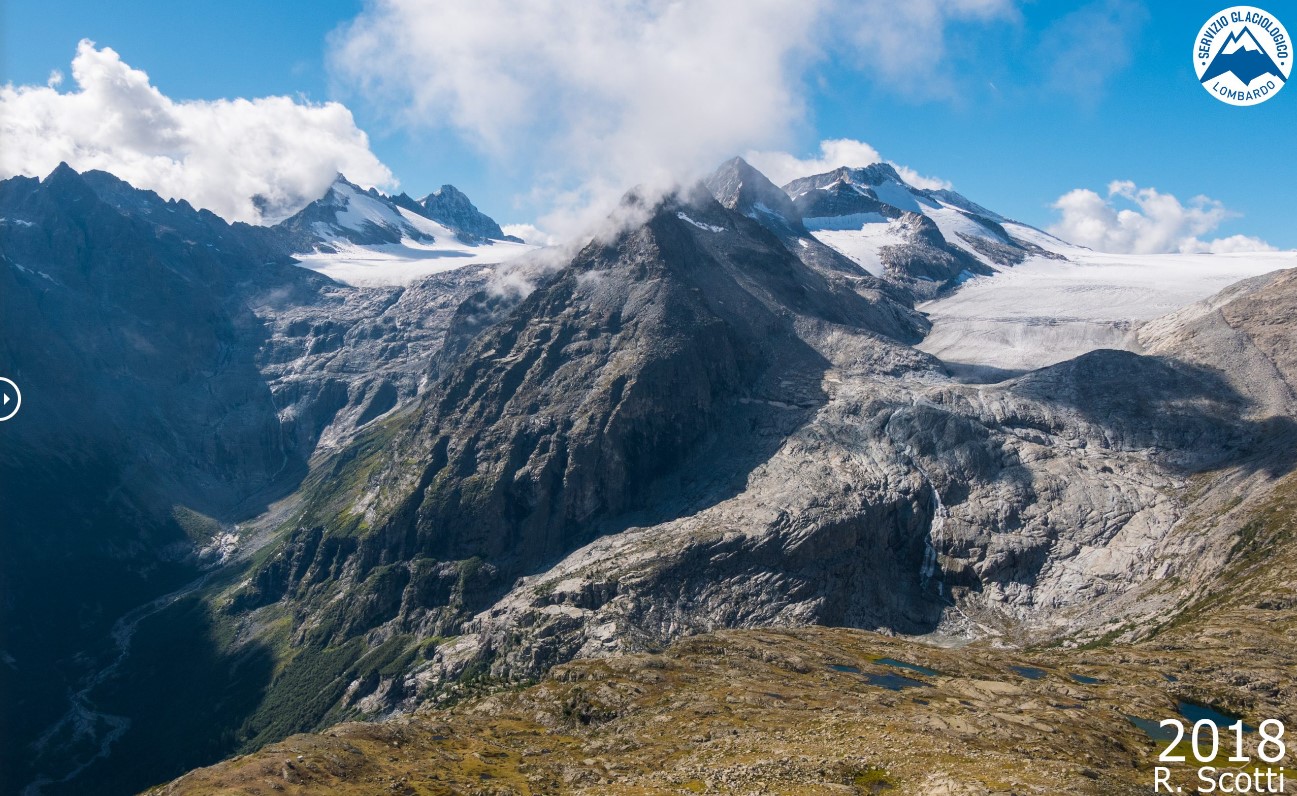
Mandrone Glacier in 1900 (Unterveger) and 2018 (R. Scotti). Source: Glaciological Service of Lombardy.
When the ice field was much bigger, Mandrone Glacier continued as an icefall down into the valley and merged with Lobbia Glacier in the east. Now the glacier has retreated onto flatter terrain, a shallow lake is forming in front of it. Though it rapidly fills with sediment, new lakes may appear as the glacier retreats. That goes alarmingly fast: over the years 2020-2023, the snout thinned by 24 m (Glaciological Service of Lombardy).
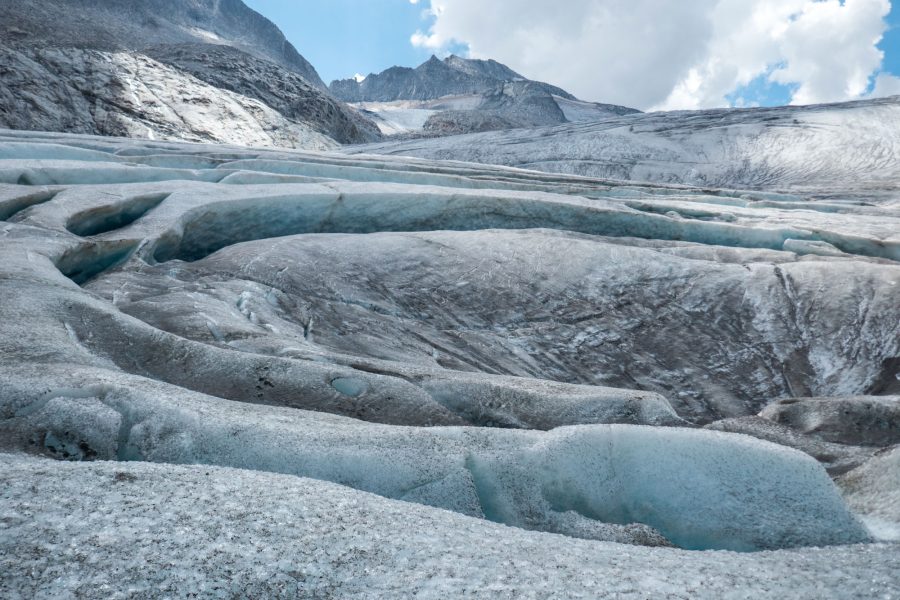
Besides thinning, the snout is also collapsing. In the summer of 2022, circular tension cracks began to form in the snout. Circular tension cracks form above cavities in or underneath the ice and are a sign of augmented melt. The glacier surface above it subsides, forming a depression in the ice with circular crevasses surrounding it. Eventually, the roof collapses, leaving a round hole in the glacier. Three of suck cavities collapsed in 2023.
Adamello Glacier lies within the Adamello Brenta Natural Park. Together with adjacent parks, it forms the biggest protected area in the Alps. In this area a relic population of brown bears was able to survive and is repopulating new areas since the 1990’s. While those bears managed to recover, the Adamello Glacier won’t.
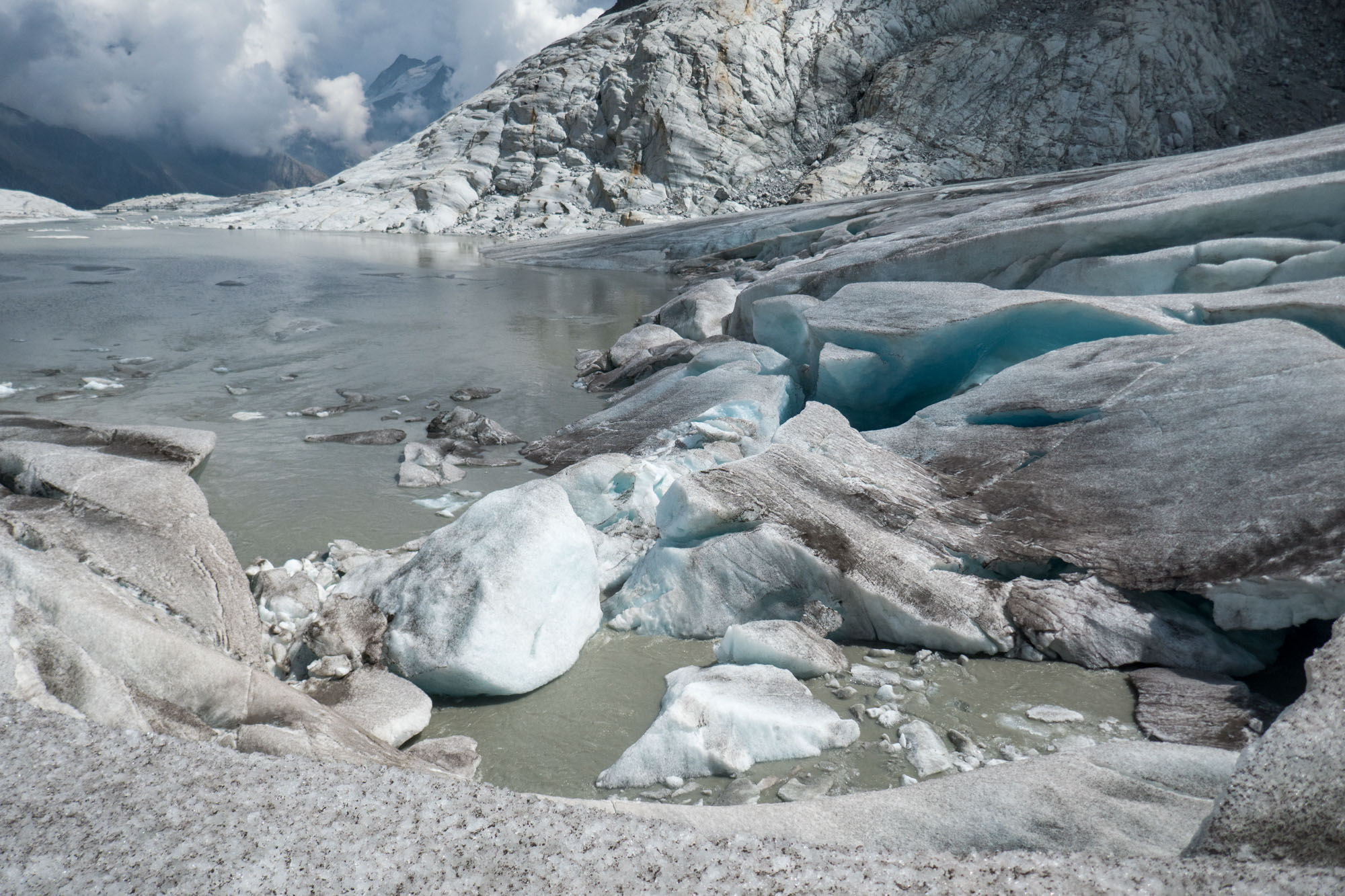
Search within glacierchange: